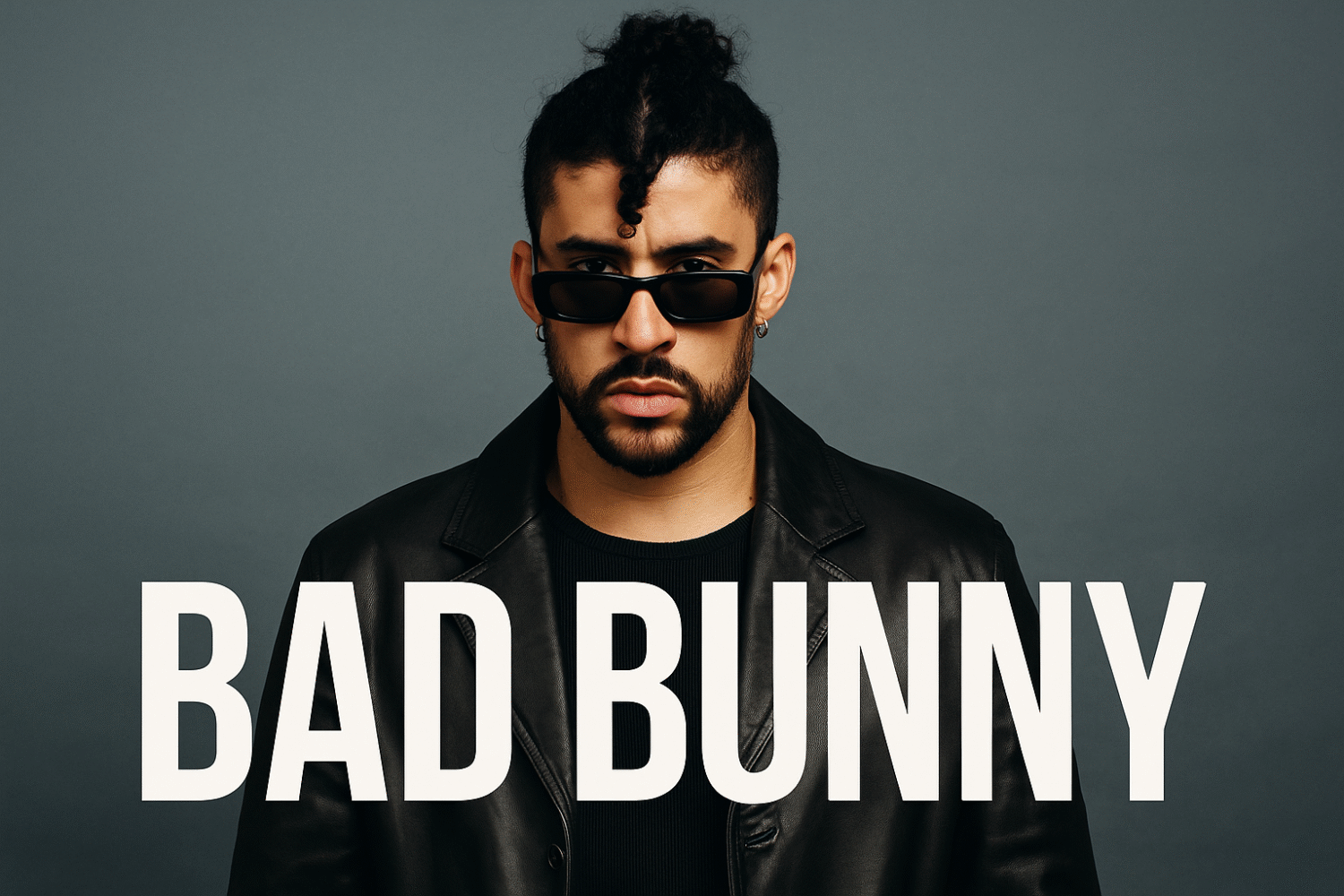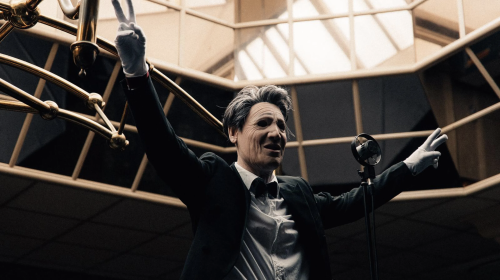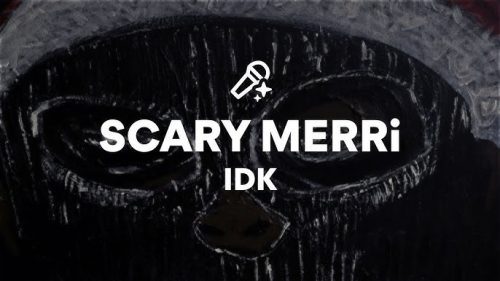Bad Bunny has grown to become the biggest music star of a generation. He’s the guy who made Spanish-language albums hit No. 1 on the Billboard 200. The artist who sold out stadium tours across continents.
He’s the kid from Vega Baja, Puerto Rico who went from SoundCloud tracks and bagging groceries to the NFL’s Super Bowl halftime headliner in 2026.
People ask, “Who is Bad Bunny?” The answer is layered:
- He’s Benito, the Puerto Rican voice of his people.
- He’s the trap star who became a rockstar without switching languages.
- He’s the reggaetonero who paints his nails, wears skirts, and still commands the streets.
- He’s the global superstar who folds salsa, bomba, and plena into albums that stream billions of times.
- He’s one of the best performers ever on the Tiny Desk Concert series.
He’s worked with Drake. J.Balvin. Karol G. Feid.
He’s been a guest host on Comedy Central’s Saturday Night Live.
He’s literally in the Happy Gilmore 2 movie alongside Adam Sandler.
This is the full look at Bad Bunny — his albums, songs, collabs, Puerto Rico residency, Super Bowl legacy, cultural footprint, and his newest album that just flipped salsa back into the center of pop culture.
The Beginning: Benito From Vega Baja
Benito Antonio Martínez Ocasio was born in Vega Baja, Puerto Rico, on March 10, 1994. He grew up on salsa, reggaeton, rock en español, and American hip-hop. As a teen, he worked bagging groceries, but music was already in his veins.
He dropped early tracks like “Diles” on SoundCloud in 2016, catching DJ Luian’s attention. With his deep voice, heavy melodies, and anti-gloss energy, Bad Bunny didn’t sound like the polished stars dominating reggaeton. He sounded different. Raw. Relatable.
His breakout came with “Soy Peor.” Suddenly Benito wasn’t just another Puerto Rican trap rapper. He was the voice of heartbreak, anger, and resilience in a way nobody had captured before.
Bad Bunny’s first full-length album wasn’t safe or predictable. X 100PRE (“Por Siempre” / “Forever”) was experimental, genre-bending, and deeply personal.
X 100PRE (2018) – The Debut That Set It Off
Highlights from that project were Estamos Bien, Caro, and MIA featuring Canadian superstar, Drake.
This was the first time people realized Bad Bunny wasn’t chasing hits. He was building worlds.
- “Estamos Bien” – Post-Hurricane María, this track became an anthem of hope.
- “Caro” – A song embracing identity and gender fluidity, pushing against Latin music’s machismo.
- “MIA” (feat. Drake) – A global smash that brought him to the Billboard Hot 100.
Later, in 2019, Benito linked with J Balvin for Oasis, it was a moment. Two leaders of the Latin movement teaming up at the height of their powers.
Oasis (2019) with J Balvin – The Dynamic Duo
Tracks like “Qué Pretendes” and “La Canción” owned the clubs, the radios, the playlists. It was a celebration of reggaeton’s global takeover.
This was one of the years that latin music really started to pick up majorly serious traction and steam in terms of mainstream popularity.
YHLQMDLG (2020) – Doing Whatever He Wants
The title translates to “I Do Whatever I Want.” And Benito did. This project was fearless. It fused reggaeton classics with chaotic experimentation.
- “Safaera” – Three beat switches, a wild ride that became a pandemic soundtrack.
- “Yo Perreo Sola” – A feminist anthem with a bold music video that had Bad Bunny in drag.
- “La Santa” and “Vete” – Pure trap heartbreak records.
This album was proof that Bad Bunny could control the culture.
El Último Tour del Mundo (2020) – History Made
Later that same year, Benito shook up the industry with El Último Tour del Mundo.
- First all-Spanish-language album to debut at No. 1 on the Billboard 200.
- “Dákiti” with Jhay Cortez exploded worldwide.
- Mixed rock, punk, and trap in ways nobody else dared.
This was Bad Bunny telling the world: Spanish music doesn’t need English co-signs to dominate. Latin artists could unite and become global icons.
Un Verano Sin Ti (2022) – Summer Soundtrack for the World
If El Último Tour del Mundo was groundbreaking, Un Verano Sin Ti was universal.
This project became Spotify’s most-streamed album of all time in a single year.
- “Titi Me Preguntó” – An instant anthem, playful and raw.
- “Me Porto Bonito” – One of his most streamed songs ever.
- “Ojitos Lindos” – A romantic, global favorite.
The album was joy, sadness, love, loss, and Caribbean sun all rolled into one. It defined the year and still gets streamed relentlessly to this day.
Nadie Sabe Lo Que Va a Pasar Mañana (2023) – The Darker Chapter
Benito pivoted again. Nadie Sabe Lo Que Va a Pasar Mañana (“Nobody Knows What Will Happen Tomorrow”) was darker, more introspective, and more Puerto Rican.
Songs like “Monaco” (sampling Charles Aznavour) and “Where She Goes” showed his global reach. But what really stood out was the salsa and classic island influence.
Tracks with live horns, percussion, and salsa phrasing hit hard. Benito was tipping his hat to Héctor Lavoe, El Gran Combo, and the old guard — while keeping it fresh.
This album broke streaming records, proving once again that Bad Bunny could lead the world wherever he wanted to go musically.
Debí Tirar Más Fotos (2025) – Salsa, Bomba, and the Island at the Center
Then came his boldest move yet. In January 2025, Bad Bunny released Debí Tirar Más Fotos. Instead of chasing the global pop formula, Benito went home — musically and culturally.
This album leaned into Afro–Puerto Rican rhythms: salsa, plena, bomba, jíbaro sounds. And it wasn’t nostalgia. It was innovation — weaving those traditions into house, trap, reggaeton, and soul.
- “El Clúb” (lead single) blended house and plena.
- “Pitorro de Coco” honored jíbaro sounds and Puerto Rican tradition.
- “NUEVAYoL” opened with salsa samples, tying NYC salsa history to Puerto Rican culture.
- “Baile Inolvidable” dives fully into salsa, with live horns and dance-floor energy that honors Puerto Rican tradition while pulling it into today’s sound.
Critics called it one of his most important albums because it placed Puerto Rican music at the center of global pop again. Fans called it a love letter. The numbers? Straight to No. 1, streaming in the hundreds of millions within days.
This was Benito bringing salsa into the TikTok era. A cultural reintroduction, done on the biggest stage possible.
Bad Bunny Tours & Residency
Bad Bunny isn’t just streaming dominance — he’s live dominance.
- El Último Tour del Mundo (2022) – Sold out across the U.S.
- World’s Hottest Tour (2022) – Stadiums across Latin America, the U.S., and Europe.
No Me Quiero Ir de Aquí: Bad Bunny’s Record-Breaking Puerto Rico Residency
In 2025, Bad Bunny took things back to the island with a historic residency called No Me Quiero Ir de Aquí at the José Miguel Agrelot Coliseum in San Juan. The announcement alone sent shockwaves through Puerto Rico — 30 shows scheduled in the island’s premier arena, all tied to his Debí Tirar Más Fotos album release. Tickets dropped and disappeared in less than four hours, with more than 400,000 sold in a single day. Demand was so overwhelming that Benito eventually added a 31st performance, dubbed “Una Más,” which was livestreamed worldwide.
The numbers are staggering. The coliseum, affectionately called “El Choli,” holds around 18,500 people at capacity. Every night, it was filled to the brim. Across 31 sold-out dates, total attendance is estimated between 500,000–600,000 fans, depending on how you count visitors across multiple shows. That’s half a million people flowing through San Juan to see Benito live — and with them came an economic boost. Local reporting estimated more than $350 million USD in economic impact between tourism, hotels, restaurants, and small businesses riding the residency wave.
But beyond ticket sales and financials, the residency was about Puerto Rico itself. For years, Benito has used his platform to highlight island struggles — from post-hurricane recovery to political corruption to cultural preservation. No Me Quiero Ir de Aquí wasn’t just concerts; it was a showcase of Puerto Rican talent, music, and pride. Each night carried its own surprises — guest musicians, salsa breaks, folkloric nods, and the fusion of Debí Tirar Más Fotos’ bomba and plena textures with his global hits.
For fans, it was a chance to experience Bad Bunny in his purest form: home, surrounded by his people, on the same stage where he once dreamed of performing. For Puerto Rico, it was validation — proof that the world’s biggest artist belongs to them, and he doesn’t forget it.
By the end of September 2025, when the final curtain fell on No Me Quiero Ir de Aquí, Benito had set a new bar not just for Puerto Rican residencies but for global live music.
Very few artists alive can pull half a million people to one arena run — and even fewer can make it feel like a cultural homecoming. Bad Bunny did both.
Bad Bunny Super Bowl Legacy
- 2020 (Miami) – Joined Shakira & J. Lo for “I Like It.” Millions asked: “Who is Bad Bunny?” That was his U.S. breakout moment.
- 2026 (California) – Headlining. The first Puerto Rican solo artist to lead the halftime show.
This puts him in the same league as Beyoncé, Rihanna, Michael Jackson, Prince. With so much friction going on with diversity and culture in the United States, this is actually one of those moments where this is not just a performance to many people — it’s a cultural moment.
Why Bad Bunny Matters So Much Right Now!
He smashes language barriers.
He helped make salsa, plena, and bomba mainstream again.
He is helping to redefine masculinity and identity in Latin music.
He uses his platform to speak on Puerto Rico’s struggles and politics.
He’s the most streamed artist on earth — without bending to industry rules.
Bad Bunny is proof that authenticity wins.
FAQ: Everything You Want to Know About Bad Bunny
What is Bad Bunny’s real name?
Benito Antonio Martínez Ocasio.
How old is he?
31 (born March 10, 1994).
Where is he from?
Vega Baja, Puerto Rico.
What was his first hit?
“Soy Peor” (2016).
What are his biggest songs?
“I Like It,” “MIA,” “Safaera,” “Dákiti,” “Me Porto Bonito,” “Titi Me Preguntó.”
How many albums does he have?
- X 100PRE (2018)
- Oasis (2019, with J Balvin)
- YHLQMDLG (2020)
- El Último Tour del Mundo (2020)
- Un Verano Sin Ti (2022)
- Nadie Sabe Lo Que Va a Pasar Mañana (2023)
- Debí Tirar Más Fotos (2025)
Did he perform at the Super Bowl?
Yes — in 2020 with Shakira and J. Lo, and set to headline 2026.
What’s his Puerto Rico residency?
No Me Quiero Ir de Aquí at the José Miguel Agrelot Coliseum in San Juan. 31 sold-out dates, total attendance is estimated between 500,000–600,000 fans
Does he use salsa in his music?
Yes. His 2023 and 2025 albums both integrate salsa, plena, bomba, and jíbaro sounds into modern trap and reggaeton.
Why is he so popular?
Because he’s real. He makes music for his people and still connects globally.
Bad Bunny is more than a superstar. He’s taking salsa into stadiums, reggaeton into the Grammys, plena into TikTok, and Puerto Rico into the Super Bowl.
From Vega Baja to the world, Benito is proof that you don’t have to change who you are to change the game.
Pair your next smoke session with a Triple hemp THC seltzer or lemonade or a Happie hemp THC seltzer — use code RespectMyRegion20 at checkout for a discount on Happie products. Both deliver smooth, uplifting effects that enhance relaxation and complement your favorite terpenes.
Affiliate Disclaimer:
Some links in this article may be affiliate links. Respect My Region may earn a small commission if you purchase through them. The code “RespectMyRegion20” provides a discount on Happie products. All products are intended for adults 21+ and compliant with hemp and cannabis laws where applicable. Respect My Region does not sell or distribute THC or hemp-derived products directly.







